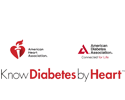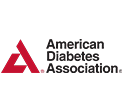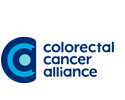MASH 101: What You Need to Know About an Emerging Liver Disease
Read or hear the words “liver disease” and most people probably think of alcohol-associated liver disease: the fatty liver, hepatitis and cirrhosis that can develop among people who drink excessively, usually over a long period of time.
But did you know there are serious liver diseases that are not linked to alcohol consumption? One is metabolic dysfunction-associated steatotic liver disease (MASLD), a condition in which fat builds up in the liver. The more severe form of the disease is called MASH, or metabolic dysfunction-associated steatohepatitis, a dangerously progressive form of MASLD in which patients have inflammation of the liver and liver damage in addition to excess fat. Cirrhosis (scar buildup) can develop if MASH advances.
“As our body’s filter, the liver is a miraculous organ deserving of more attention,” said Lorraine Stiehl, CEO, American Liver Foundation (ALF). “If our liver is unhealthy, it can affect other major systems including our kidneys and heart and lead to liver fibrosis and cirrhosis, which in turn, can potentially lead to the need for a liver transplant, liver cancer or even early death.”
MASH: The Leading Cause of Cirrhosis and Liver Transplant
According to ALF, about 100 million people (or 25%) in the United States have MASLD (most are between the ages of 40 and 60) and about 1.5 to 6.5 percent of U.S. adults have MASH. One estimate is that nine to 15 million adults have MASH. However, children can also have MAFLD and MASH. Close to 10 percent of those ages 2 to 19 (about six million children) are estimated to have MAFLD, in part due to the growing epidemic of childhood obesity.
The prevalence of MASH is projected to increase by 63 percent by 2030, and it is expected to become a leading cause of liver transplant in the U.S. by 2025. MASH is also one of the leading causes of cirrhosis in adults. Up to 25% of adults with MASH may have cirrhosis.
“MASLD and MASH are a looming public health crisis,” Stiehl said, noting that ALF and the entire MASLD/MASH community look forward to gaining an even better understanding of the prevalence, diagnostic practices, treatment modalities, and potential complications of the disease through the first-ever study on NAFLD.
NASH To MASH: Same Disease with a New Name
Until recently, MASH was known by the name NASH, or nonalcoholic steatohepatitis, and MASLD was known as NAFLD, or nonalcoholic fatty liver disease. The updated names focus on the newly understood metabolic dysfunction-related drivers of the diseases. Those with metabolic syndrome are more likely to develop MASLD and MASH than those without metabolic syndrome. In order to be diagnosed with metabolic syndrome, any three of the following conditions must be present:
- Large waist size
- High blood pressure
- High blood sugar (glucose)
- High levels of triglycerides in the blood
- Low levels of “good” (HDL) cholesterol in the blood
The updated names also give health care providers more targeted guidance for early screening of individuals with other metabolic conditions like overweight, obesity, high cholesterol, and type 2 diabetes, as well as those with lifestyle-related issues like poor diet and exercise. Noting that diseases aren’t siloed in the human body, Stiehl said she hopes the nomenclature change will prompt typically siloed medical specialties like endocrinology, gastroenterology, cardiology, and hepatology to work more closely together to address liver-related metabolic issues.
“Patients, providers, scientists, non-profits, and advocates in the worldwide liver community came together last year to modify the way we talk about NASH – now MASH – in an effort to better identify who has the disease or is at risk for the disease,” Stiehl said. “The name change also removes some of the stigma associated with the terms ‘fatty’ and ‘alcoholic’, which can create barriers to screening, diagnosis and appropriate treatment through medications and lifestyle modification.”
MASH Has Few, If Any, Symptoms
“One of the biggest challenges with MASH is that it typically has very few symptoms,” Stiehl said. “As a result, many with the disease only find out if they have a routine blood test or screening for another medical condition.”
To help determine if someone has MASH, their doctor will perform a physical exam, conduct a blood test to check for high levels of liver enzymes and liver scarring, and/or do an ultrasound of the abdomen to see if it is enlarged. A liver biopsy may also be ordered.
If someone does have symptoms, they may feel tired or have pain in the upper right side of the abdomen, where the liver is. Those with severe scarring of the liver may have signs and symptoms of cirrhosis including:
- Intense itching
- A swollen belly
- Brusing and bleeding easily
- Yellowing of the skin and eyes
- Spider-like blood vessels just beneath the skin’s surface
- Behavioral changes, slurred speech, and confusion
Support for People With MASH
ALF has several programs, services and initiatives to support the MASH patient community as well as those with other liver diseases, including:
- A toll-free helpline, 1-800-GO-LIVER, and a live chat at org
- A MASH support group on Facebook
- Caring Connections, a peer-to-peer support programs that connects patients and caregivers with others facing similar challenges
- A Caregiver Resources page
- Help and information on clinical trials designed to find ways to more effectively prevent, diagnose or treat the disease
- Fact sheets and other educational resources
- A variety of on-demand wellness webinars
- A robust research program, which has provided nearly $28 million in research funding since 1979
ALF is working to raise awareness of MASH among primary care providers by reaching out to nurse practitioners, physician assistants and other frontline health professionals. They currently have blood-draw screening programs in 50 clinics across 30 states to help people identify liver diseases earlier, before it’s too late. These screenings check seven biomarkers that are highly predictive of risk for developing MASLD and MASH.
ALF also is exhibiting and presenting at primary care conferences and even screening primary care physicians for evidence of fat on their livers, to help drive home the importance of screening their own patients for such evidence.
ALF is taking its message directly to the public as well, at local festivals and events, where they have information booths and conduct free, non-invasive elastography ultrasound screenings of the liver, after which ALF connects screened individuals to the appropriate health care provider. In addition, ALF sponsors the Think Liver Think Life™ public health campaign, which aims to ensure every American understands their risk for liver disease, receives appropriate screening and care coordination, and feels well-informed and supported throughout their liver journey.
The Think Liver Think Life web site features a liver health quiz to help people see whether they or a loved one could be at risk for fatty liver disease. Since the quiz was launched last year, 10,000 people have participated, and 92 percent found they are at risk or significant risk for liver disease.
Financial Help is Available for MASH Treatment
Earlier this year, the Food and Drug Administration (FDA) granted accelerated approval of the first-of-its-kind drug therapy for treatment of MASH in patients with fibrosis. However, accessing and paying for treatment with the new therapy and other medications, along with other associated costs related to treatment, may present a financial hurdle and dissuade adherence to the prescribed treatment regimen.
To help alleviate the financial burden, in May, the HealthWell Foundation launched a new MASH fund to provide financial assistance to patients living with MASH. Through the fund, HealthWell will provide up to $8,000 in medication copayment or insurance premium assistance to eligible patients. The fund also provides financial assistance for doctor visits, disease-related laboratory testing, diagnostic testing, and transportation costs for treatment and monitoring.
“We applaud the new HealthWell MASH fund as it will serve the most marginalized groups affected by the disease and help alleviate some of the financial burdens these communities face in accessing new treatments and care,” Stiehl said.



















